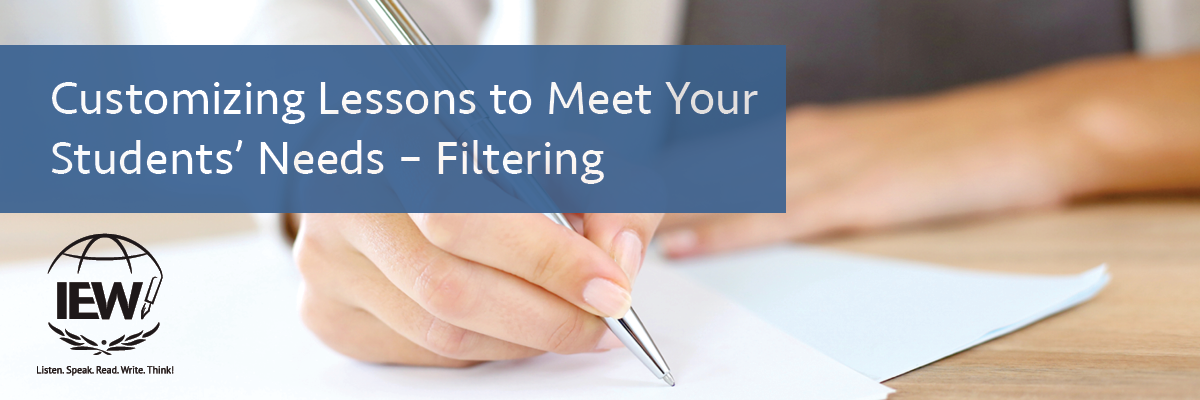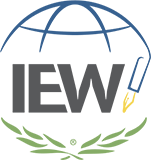
“The optimal learning environment is one which allows each child to progress at his own rate allowing sufficient repetition for mastery.” Andrew Pudewa, IEW Founder, Author, and Director
In the Teaching Writing: Structure and Style seminar, you learned that students are not expected to master the individual units within one school year. Instead, teachers work through the nine structural models over the course of the year. The next year, the sequence is repeated using different source texts with increased expectations for students who have prior experience. This ensures that your new students learn the process from the beginning while your experienced students benefit from the review and reinforcement of working through those units again. New students get an equitable starting point. Struggling students benefit from repeated exposure to the structural models, and everyone else has opportunities to develop and enhance their skills. Because teachers continue to model each skill or technique, every student is afforded a chance to advance along his or her pathway toward mastery. This cyclical design of the method provides opportunities for your students to succeed at every entry point along the pathway. Your role as the teacher is to meet them where they are on that path and guide them forward as far as they are able.
Adjusting the checklist is one effective way to meet your students at their point of need. The second strategy we recommend is a technique that Dr. Webster used to customize instruction and foster independence in his students.
What is Filtering?
Filtering is the process of moving students from class-directed assignments to independent assignments, allowing the teacher to challenge one student without overwhelming another. Even though much of the instruction for IEW is done as a whole class, the ultimate goal is for all students—over time—to be able to complete assignments independently. Here’s how it works:
To prepare for filtering:
- Collect a variety of source materials for Units 1–6. You can use IEW’s Writing Source Packet (included with a Premium Membership). Add additional sources based on what you will be studying during the year.
- The sources for each unit should be at or below your students’ reading level. (For example, within a 6th-grade classroom, you might have students reading at grade levels 4-8.) Divide these sources into three categories; easy, medium, and difficult and color code the papers.
- Make at least two copies of each source text so that multiple children can choose the same text. Mount them on cardstock to make them sturdier and, if you wish, laminate them to make them more durable.
- Get some folders and a free-standing file box or hanging-file crate.
- Label the folders for each of the Units 2–6*
- Fill each section with the appropriate source texts, filed according to the unit number.
- Establish a classroom procedure for students to follow when they work independently. Teach and model the procedure to your students and practice it with them until it becomes routine.
* Because Unit 7 takes ideas from a student’s brain, pre-written sources are not needed. Unit 8 is taught with content from the same kinds of sources used in Unit 6, and Unit 9 is usually taught using fables, short stories, and other fictional materials, just as in Unit 3.
How to Filter:
At the beginning of each unit or when a new concept such as a stylistic technique is introduced:
- Start by modeling the unit or concept for the entire class, following that week’s lesson plan from your theme-based writing course or Structure and Style for Students.
- As you observe your students, notice those who clearly understand the process. Some will catch on after one lesson; others will need multiple exposures.
- Grade the papers, using the checklist, and look for the students who followed all the instructions. Depending on the grade level and the number of years students have been taught the IEW method, you could know after one lesson if students are ready to work independently.
- The first five students or so who are ready to work alone are called the engine. They determine the pace at which you introduce new skills (e.g., a new stylistic technique or the topic/clincher rule).
- By their participation and their papers, look for students who understand the process, and thus you have your “engine.”
- On the next assignment, direct your engine students to choose an appropriate level of source text from the file box/crate to accomplish alone. Example: “Choose a green source text.”
- As your engine students work independently, you teach the lesson to the students who are left. After that lesson is graded, determine which students are ready to become independent.
- With each assignment, more students are filtered as they show signs of understanding the process. Some students will not be able to transfer to individual work before the time planned for the unit to end. You must still move on to the next unit. Their chance to work independently may happen in a later unit, or it may not happen until the next year with another teacher.
- When you move on to the next unit, return all students to whole-class instruction and begin again with step 1.
Once you have your file box set up and your routines firmly established with your students, filtering is easy to maintain. Simply replenish your sources as you find them from your curriculum content, current events, holidays, and special events to keep your students engaged and motivated.
If you are interested in learning more about individualized learning, we recommend
Mastery Learning, Ability Development, and Individualized Learning audio talk (If you are a Premium Member, you will find this talk in your account under the FILES tab.)
If you need help getting started, contact your Educational Consultant. Don’t know if you have one? Email your question to Schools@IEW.com, or call 800.856.5815, and we’ll connect you to the right person.
